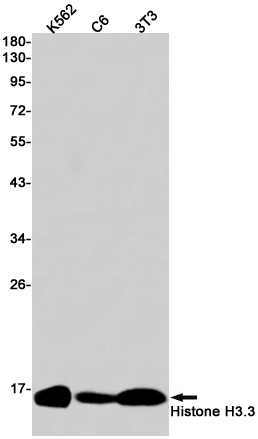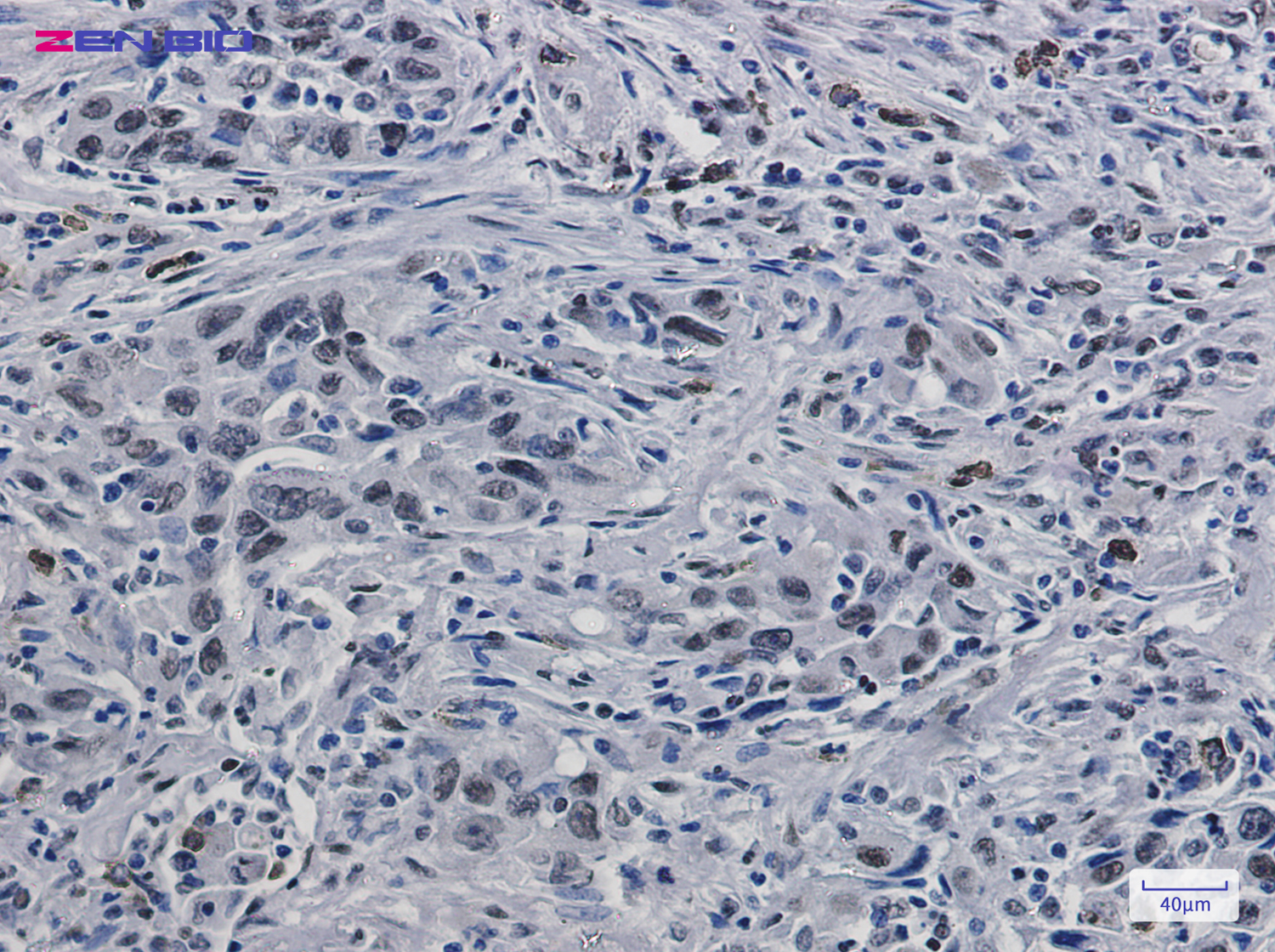-
Product Name
Anti-Histone H3.3 Rabbit antibody
- Documents
-
Description
Histone H3.3 Rabbit polyclonal antibody
-
Tested applications
WB, IHC-P
-
Species reactivity
Human, Mouse, Rat
-
Alternative names
H3F3; H3.3A antibody
-
Isotype
Rabbit IgG
-
Preparation
Antigen: A synthetic peptide of human Histone H3.3
-
Clonality
Polyclonal
-
Formulation
Supplied in 50nM Tris-Glycine(pH 7.4), 0.15M Nacl, 40%Glycerol, 0.01% sodium azide and 0.05% BSA.
-
Storage instructions
Store at -20°C. Stable for 12 months from date of receipt.
-
Applications
WB: 1/1000
IHC: 1/200
-
Validations

Western blot detection of Histone H3.3 in K562,C6,3T3 cell lysates using Histone H3.3 Rabbit pAb(1:1000 diluted).Predicted band size:15kDa.Observed band size:15kDa.

Immunohistochemistry of Histone H3.3 in paraffin-embedded Human lung cancer tissue using Histone H3.3 Rabbit pAb at dilution 1/50
-
Background
Swiss-Prot Acc.P84243.Variant histone H3 which replaces conventional H3 in a wide range of nucleosomes in active genes. Constitutes the predominant form of histone H3 in non-dividing cells and is incorporated into chromatin independently of DNA synthesis. Deposited at sites of nucleosomal displacement throughout transcribed genes, suggesting that it represents an epigenetic imprint of transcriptionally active chromatin. Nucleosomes wrap and compact DNA into chromatin, limiting DNA accessibility to the cellular machineries which require DNA as a template. Histones thereby play a central role in transcription regulation, DNA repair, DNA replication and chromosomal stability. DNA accessibility is regulated via a complex set of post-translational modifications of histones, also called histone code, and nucleosome remodeling.
Related Products / Services
Please note: All products are "FOR RESEARCH USE ONLY AND ARE NOT INTENDED FOR DIAGNOSTIC OR THERAPEUTIC USE"
